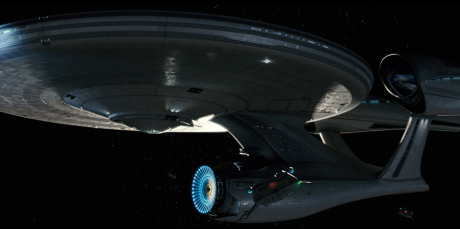Making Star Trek Possible: Warp speed without the warp drive
Friday, May 8th, 2009A five-part series that tries to explain how to make the science of Star Trek real…

Probably the most fascinating idea that Star Trek popularized was the idea of a warp drive. This was a concept from golden age sci-fi that went mainstream via Trek as space-age audiences became sophisticated enough to realize that NASA’s fastest rockets wouldn’t take you very far in a human lifetime. Even going the speed of light wouldn’t work for a show that tried to visit more than one star system in it’s 3 season run (due to time dilation your characters could visit those places, but their friends back on earth would be long dead). What was needed was a (plot) device that allowed you to visit distant planets in the time it takes to drive to the next state.
Since Star Trek, warp drive has become a part of public consciousness. It’s a theoretical form of technology that some feel is as inevitable as AI and teleportation.
There’s one big catch; while AI (or something that acts like it) seems to be a problem solved at some point on a graph projecting the development of intelligent systems and teleportation seems to be more of an energy problem, there’s not a viable theory for how a warp drive could work (exotic matter, worm holes, Alcubierre drives etc.) that doesn’t violate the laws of physics (as we know them) or result in some equation balancing phenomenon like a “quantum scream” (an obscure term used in an equally obscure paper on the subject).
(more…)